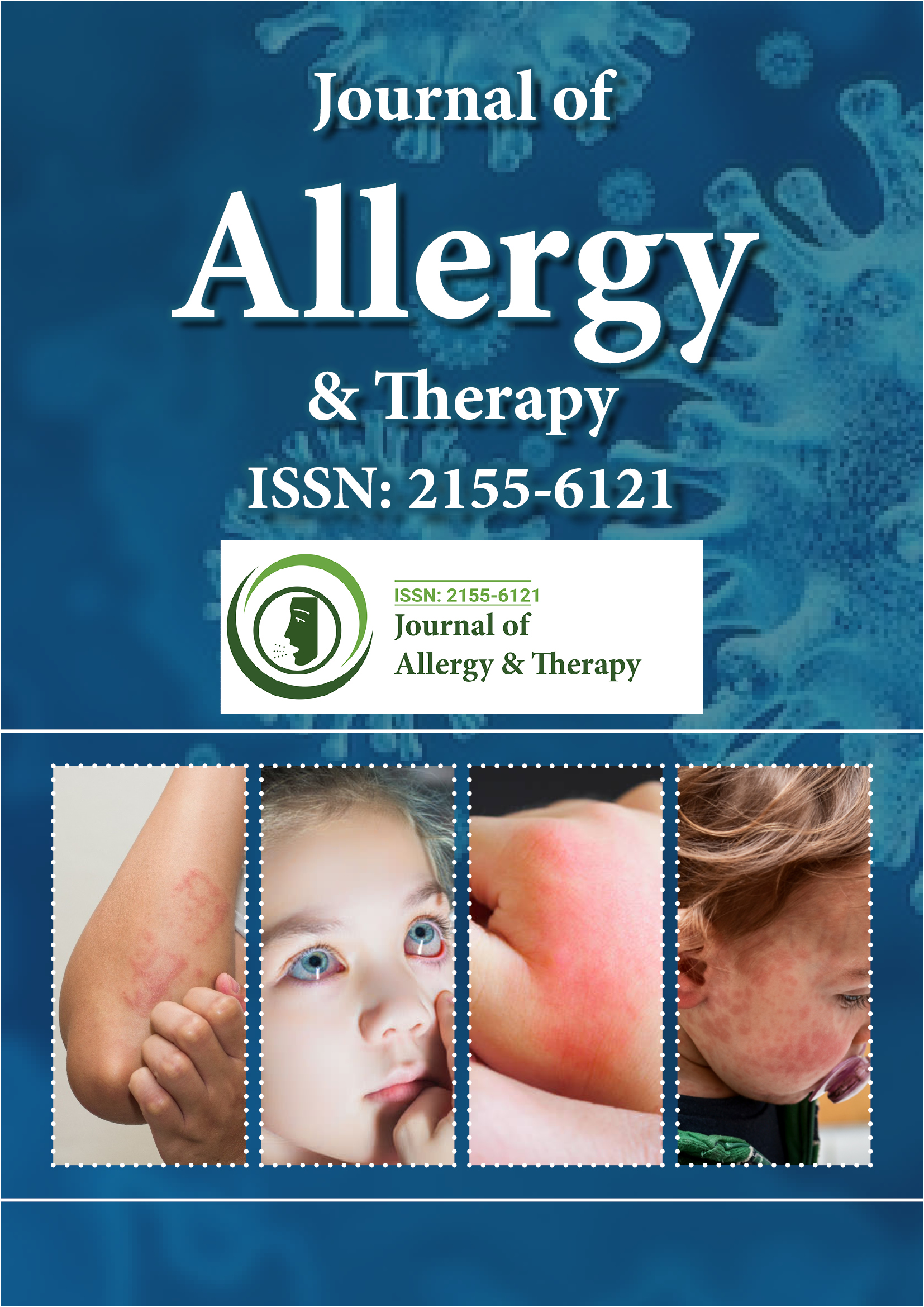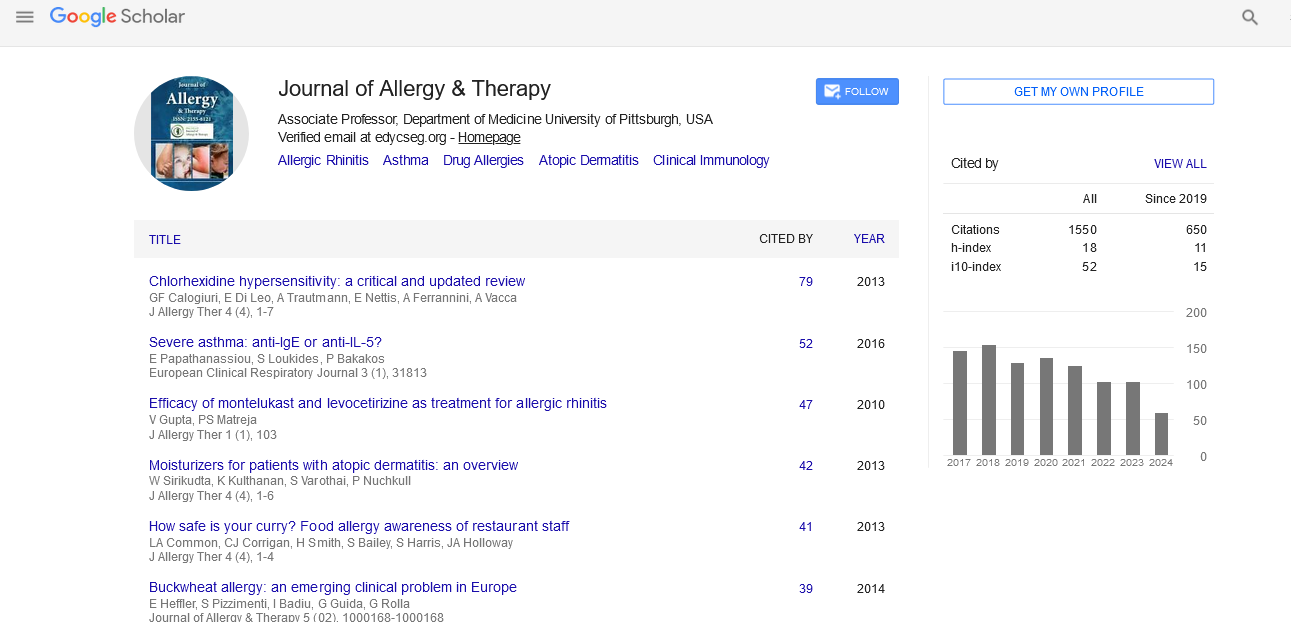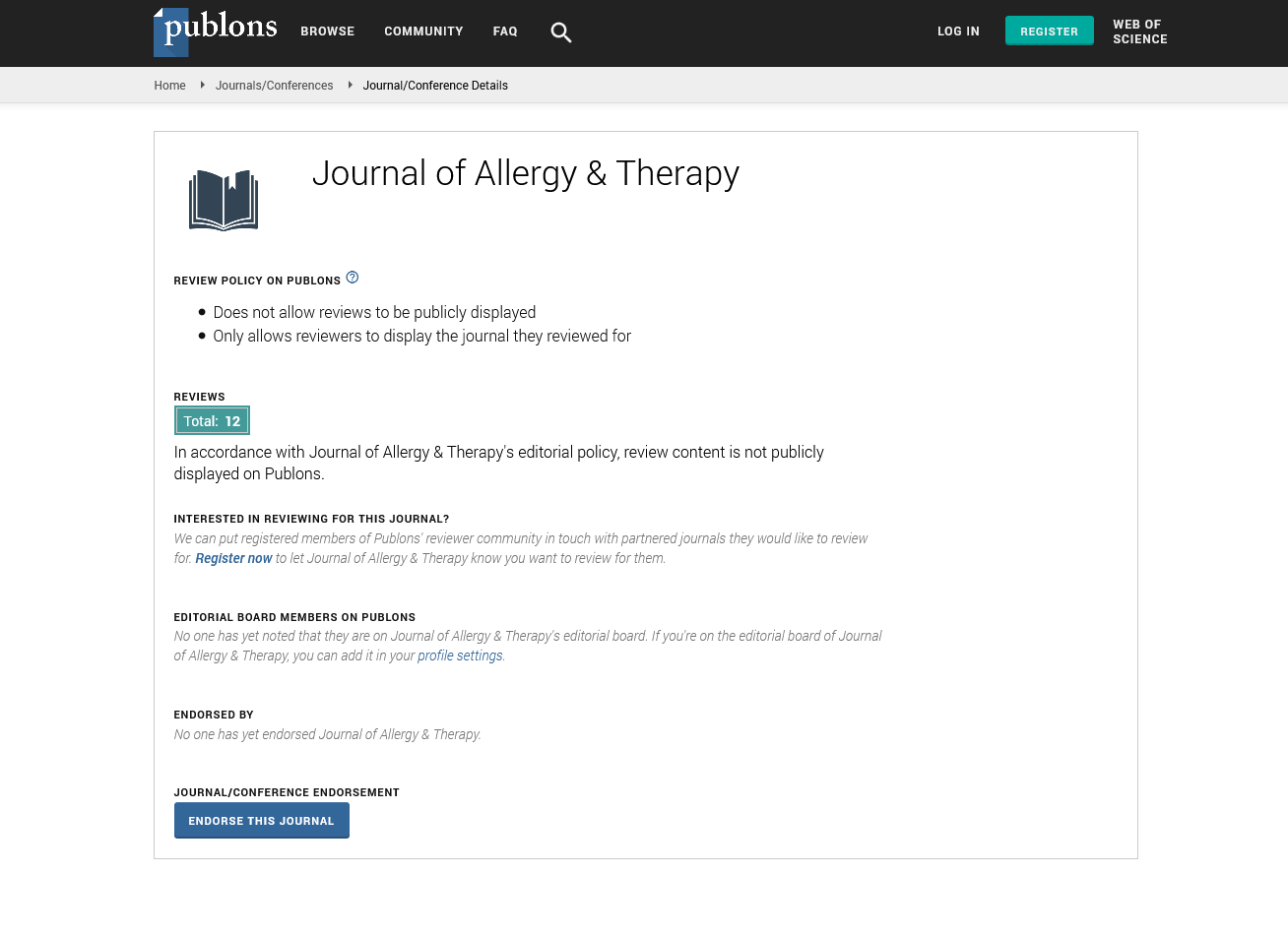PMC/PubMed Indexed Articles
Indexed In
- Academic Journals Database
- Open J Gate
- Genamics JournalSeek
- Academic Keys
- JournalTOCs
- China National Knowledge Infrastructure (CNKI)
- Ulrich's Periodicals Directory
- Electronic Journals Library
- RefSeek
- Hamdard University
- EBSCO A-Z
- OCLC- WorldCat
- SWB online catalog
- Virtual Library of Biology (vifabio)
- Publons
- Geneva Foundation for Medical Education and Research
- Euro Pub
- Google Scholar
Useful Links
Share This Page
Journal Flyer

Open Access Journals
- Agri and Aquaculture
- Biochemistry
- Bioinformatics & Systems Biology
- Business & Management
- Chemistry
- Clinical Sciences
- Engineering
- Food & Nutrition
- General Science
- Genetics & Molecular Biology
- Immunology & Microbiology
- Medical Sciences
- Neuroscience & Psychology
- Nursing & Health Care
- Pharmaceutical Sciences
Para grass beta-expansins with IgE-reactivity against sera of Thai atopic donors
7th International Conference on Allergy, Asthma and Clinical Immunology
September 14-15, 2016 Amsterdam, Netherlands
Siriyaporn Dhammachat
Mahidol University, Thailand
Posters & Accepted Abstracts: J Allergy Ther
Abstract:
Allergy has been an important and increasing problem in Thailand. Several grasses have been distributed and detected in the airborne pollen surveys. Para grass, one of the major allergenic sources in Thailand has not been studied for allergenic component profiles in Thai population and others. Therefore, aim of the present study was to identify the IgE-binding protein from para grass pollen. Immunoblotting assay was used to identify the IgE-binding proteins in sera of grass atopic donors. Two 30 kD proteins were potential the major IgE-binding compounds of para grass pollen. The peptide matching results from ESI-LC-MS/MS analysis indicated both proteins highly matched to beta-expansins but different isoforms, beta-expansin 9 and beta-expansin 11. The cDNA fragments of beta-expansin 9 were cloned and had similarity to Panicoideae allergens such as Pas n 1, Sor h 1 and Zea m 1, whereas those of beta-expansin 11 were closely related to different isoforms of Sor h 1 and Zea m 1. Two beta-expansins were varied in nucleotide and amino acid sequences. It can be concluded that beta-expansins were an important IgE-binding compounds in para grass pollen among Thai atopic donors. Moreover, at least two subgroups of allergenic beta-expansins were found in para grass and other Panicoidea grasses. This study was a first report of para grass IgE-binding proteins which provided a better understanding in grass pollen allergy among Thai population. The information gained from this study could be benefit for diagnostic and therapeutic approaches of grass pollen allergy in subtropical region.
Biography :
Email: siriyaporn.dh@gmail.com


